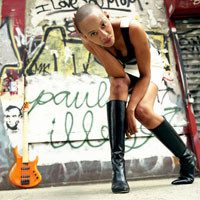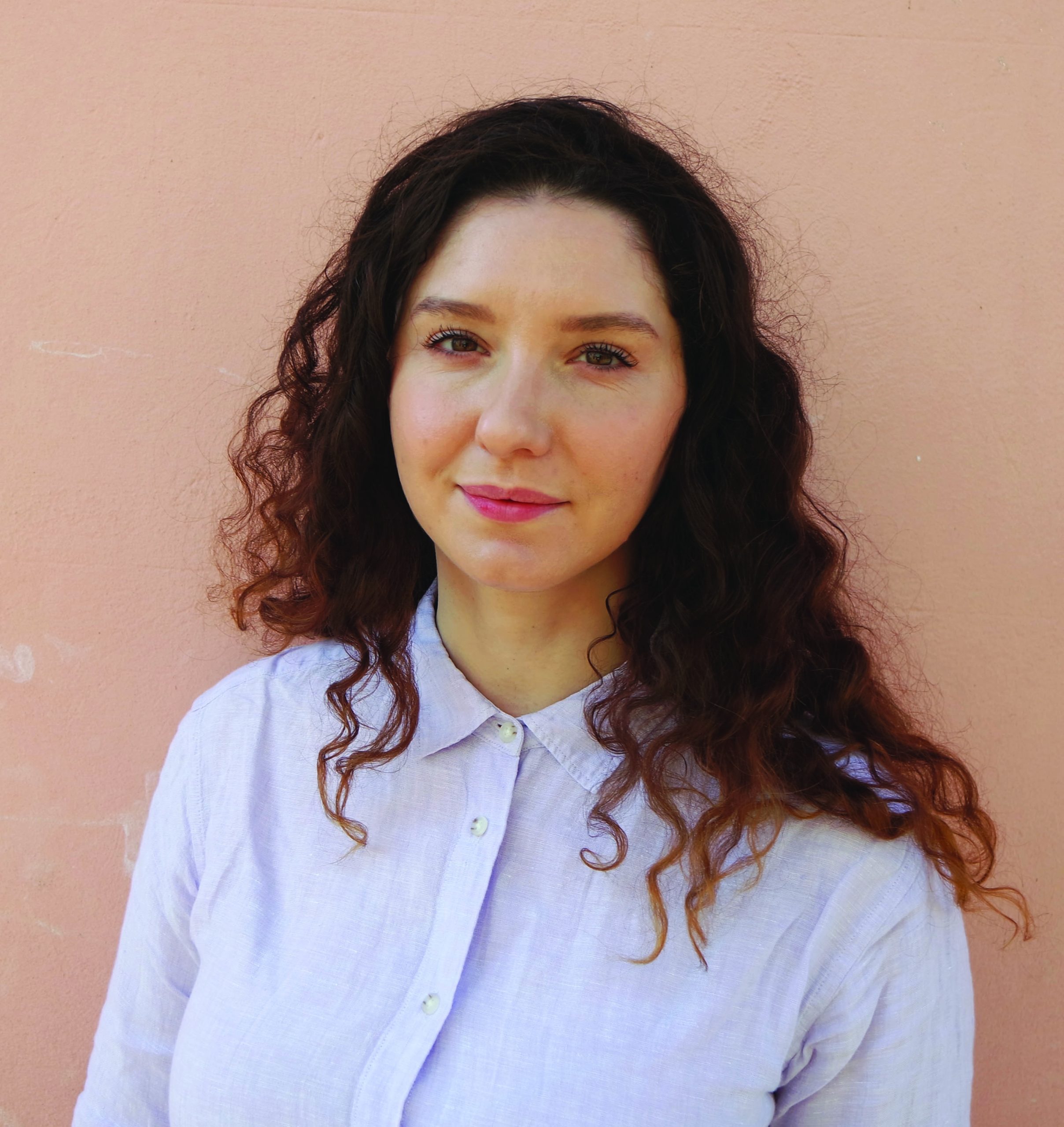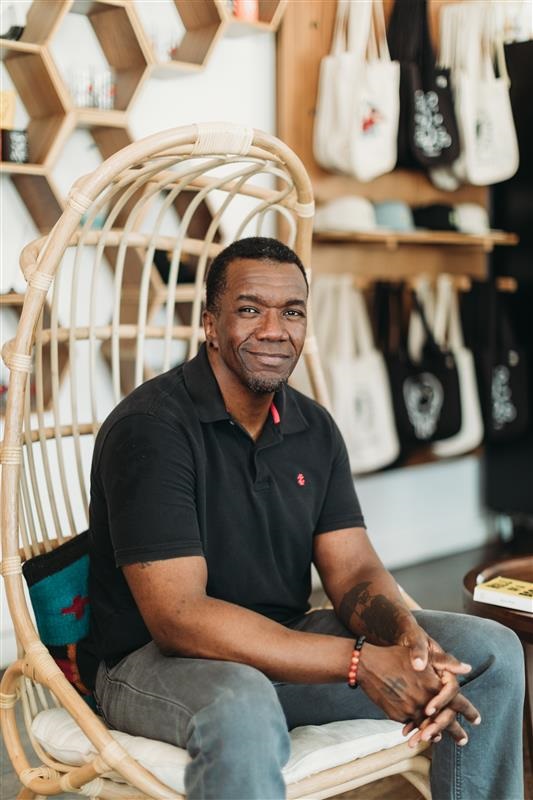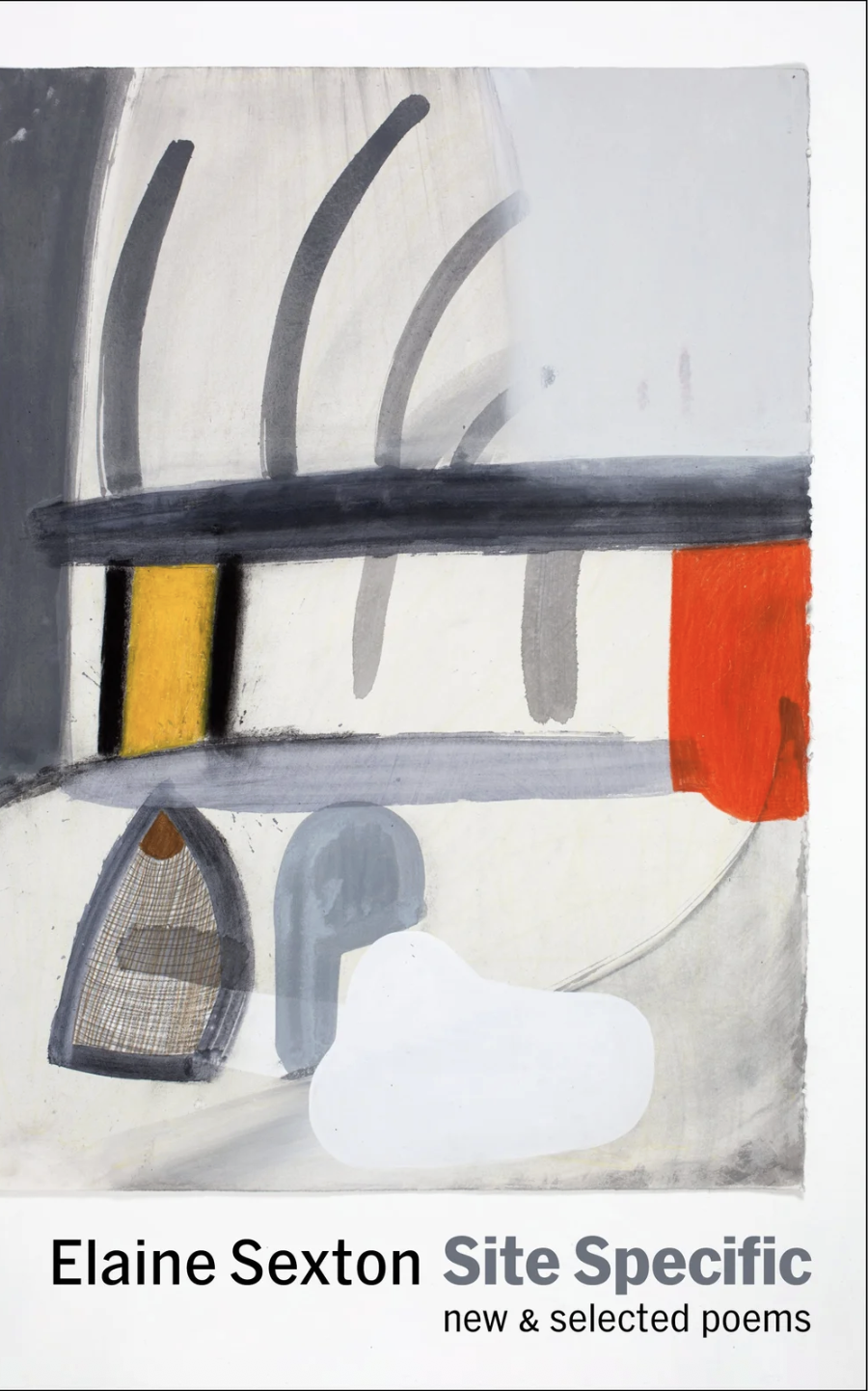Welcome back to Sound & Vision, the Rumpus profile series that spotlights the creative talents of those working behind the scenes in the music industry. This time I’m talking with Gail Ann Dorsey, a top session bassist and singer-songwriter who’s worked with David Bowie, Bryan Ferry, Dar Williams, Tears For Fears, the Indigo Girls, Gwen Stefani, Lenny Kravitz, and many more.
Though Dorsey may be best known for her work with Bowie—she’s been a member of his touring band since 1995 and has contributed vocals and bass for Earthling (1997), Heathen (2002), Reality (2003), and Bowie’s most recent release The Next Day (2013)— Dorsey has released three solo albums and is currently working on another. Her sound is eclectic and very much all her own. Dorsey and I are both from Philly, and so when we met I was very excited to talk with her about how growing up in the city has shaped her music.
***
The Rumpus: I read somewhere that you actually started out playing guitar, not bass. Is that true?
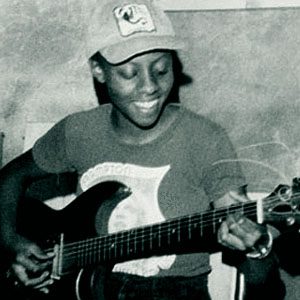 Gail Ann Dorsey: It is! I got an acoustic Kay parlor guitar for my ninth birthday from my godmother, who lived next door. I couldn’t afford private lessons, but fortunately there was some music in school then and I played clarinet and a few other things, but I pretty much taught myself to play guitar. At first I didn’t even know how to tune it. I knew nothing about it. I didn’t know anyone who played it at the time. Eventually my learning came from meeting other kids in the neighborhood. But at first I just picked it up and taught myself how to play things off the radio and off records. I was like “Gosh, this is really hard! How do other people play this?” Then someone took my guitar and said, “That’s because it’s not in tune.” They tuned it up for me, and I had to start all over again [laughs].
Gail Ann Dorsey: It is! I got an acoustic Kay parlor guitar for my ninth birthday from my godmother, who lived next door. I couldn’t afford private lessons, but fortunately there was some music in school then and I played clarinet and a few other things, but I pretty much taught myself to play guitar. At first I didn’t even know how to tune it. I knew nothing about it. I didn’t know anyone who played it at the time. Eventually my learning came from meeting other kids in the neighborhood. But at first I just picked it up and taught myself how to play things off the radio and off records. I was like “Gosh, this is really hard! How do other people play this?” Then someone took my guitar and said, “That’s because it’s not in tune.” They tuned it up for me, and I had to start all over again [laughs].
Rumpus: Was the guitar a spontaneous gift or had you been asking for one?
Dorsey: I’d been asking since I was five! Just begging, begging, begging for a guitar! I spent a lot of time at my godmother’s house. You always like your aunts or your godmothers. Not that my mom wasn’t fun, but it’s just another place to go, a different vibe. She lived in the row house right next door and I’d just go and sit in her kitchen with her while she was cooking and I took her broom—later on I heard the same story about Jimi Hendrix—and I played on a broom until the bristles would fall out. I’d sit on a little step stool and sing to her with this broom for hours and hours. So I think maybe she just got fed up—like get this girl a real guitar—but in the mean time I wore out all her brooms.
Rumpus: Did you grow up in a very musical environment?
Dorsey: I was the youngest of five kids and I was the “surprise” kid—I was seven years behind my sister and then they get older from there. So when I was getting into music they were already teenagers and I got their hand-me-downs. And you know Philly is a music city so there was music everywhere, especially in the ’60s and ’70s. I mean the radio was amazing and for concerts everyone came to town and there were so many great musicians—there was the Philly sound and just all of this great stuff going on, a rich culture that I was steeped in. I loved it! I just couldn’t have had a better education.
Also, at the time there was more of a crossover between R&B and rock. So you had like Jimi Hendrix, which was really blues and R&B based rock. It’s not like R. Kelly or today’s so-called R&B. I’m thinking about all those bands my brothers and sisters listened to, groups like Chicago, Blood, Sweat & Tears, as well as The O’Jays, Earth, Wind & Fire—that were so musically diverse. There were orchestrations in this music and rock elements and classical, all kinds of stuff mixed in. Songs today can be somewhat bland in comparison.
Rumpus: Were there specific bands or musicians that you tried to emulate?
Dorsey: Rufus and Chaka Khan was one of my favorite bands. I was about twelve when they came on the scene. One of my first guitar heroes was Tony Maiden from Rufus and I tried to learn all of those funky riffs on “You Got the Love.” Sly & the Family Stone, Earth, Wind & Fire, Chicago, all that funk-rock-pop crossover stuff influenced me. I was trying to learn riffs. For some reason guitar—especially electric guitar—it was like a voice, some magical form of expression for me. Still to this day I can hear a particular guitar solo and be reduced to tears.
Rumpus: But yet you switched to bass pretty early on?
Dorsey: Yes. I had a band with two guys who lived across the street—a drummer and a bass player. The bass player was fourteen and the drummer and I were twelve. I started the band and made them learn, like, Grand Funk Railroad and some little grooves that I would make up, pretty simple stuff. But we rehearsed in my basement in the summertime when school was out and when we finished their instruments would stay there. So I would go down in the basement late at night and play around on the bass and drums and my mother was always very tolerant, so I was lucky. So I had a little taste of what the bass was, but it wasn’t in my wildest dreams to play bass. It was all about the guitar and nothing else.
When I was about fourteen or fifteen I was getting much better at guitar and starting to write my own songs—just three chord songs—and I wanted to see if I could get a summer job. I was a typical teenager, and I wanted to earn some money to get some new jeans and whatnot [laughs]. We were living on social security; it was just my mom—my father passed away when I was six. I didn’t want to work at McDonald’s. I just couldn’t do that. I mean I could—I tried! But it didn’t work out! So I wanted to see if I could make some money playing music.
Rumpus: How did you get your first bass gig?
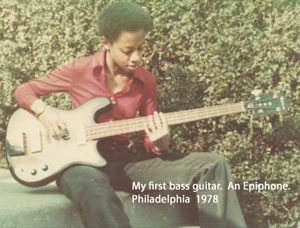 Dorsey: I went looking on the bulletin boards in the music stores, which was the way we used to do it to find a gig. You’d post a three-by-five card saying, you know, “singer looking for piano player,” but I noticed that like ninety percent of the ads said “guitarist seeks. . . .” So I just thought no one needs a guitarist; everyone already plays guitar apparently. Then I thought, “Well, maybe I’ll do the bass.” There was one card in particular that struck me. It said “Top 40 cover band: Rolling Stones, Mott the Hoople”—all the things I was listening to!
Dorsey: I went looking on the bulletin boards in the music stores, which was the way we used to do it to find a gig. You’d post a three-by-five card saying, you know, “singer looking for piano player,” but I noticed that like ninety percent of the ads said “guitarist seeks. . . .” So I just thought no one needs a guitarist; everyone already plays guitar apparently. Then I thought, “Well, maybe I’ll do the bass.” There was one card in particular that struck me. It said “Top 40 cover band: Rolling Stones, Mott the Hoople”—all the things I was listening to!
Rumpus: It’s amazing to think all that stuff was “Top 40”!
Dorsey: I know! Right! “Miss You” and all those songs. I remember singing Elvin Bishop, “Fooled Around and Fell in Love” when it was in the top ten.
Rumpus: I remember they used to have those little slips of paper listing the top hits of the week. You could pick it up at the record store . . .
Dorsey: Oh yeah! That’s right! Down on Chestnut Street. Sam Goody . . .
Rumpus: Yep. My cousin worked at Sam Goody.
Dorsey: That’s where I saw the bulletin board! That’s where my gear came from too.
Rumpus: I always got my concert tickets there. They had that Ticketmaster Ticketron machine.
Dorsey: Wow. That’s old school.
Rumpus: Definitely.
Dorsey: Yeah, for me playing bass was just a whim. I thought I’d try it, so I borrowed a friend’s bass and I went to the audition. And I remember the audition place had the same telephone exchange as my neighborhood, which was good because my mother was wary about me going to some stranger’s house in a strange neighborhood—especially in those days, I was well aware that I had to be careful. Playing rock ‘n’ roll music, it’s going to be integrated, but being black you didn’t want to go into some neighborhood where you weren’t wanted.
Rumpus: The city was so segregated in those days.
Dorsey: So segregated, even from one street to the next. Luckily, this particular band happened to be in my neighborhood. And to this day, Jay Medley, who posted the ad is one of my best friends. He’s still in Philly and is still very much active and kicking ass on guitar. He’s a really great guitar player from a musical family. Jay taught me so much, he was a great mentor to me, and I played in his Top 40 band, and that was the beginning of my interest in the bass. What became apparent was that I was excelling faster on the bass than the guitar. It was natural for me.
Listen to Gail’s song about her hometown (iPad/iPhone users click here):
[soundcloud url=”https://api.soundcloud.com/tracks/156526532″ params=”color=ff5500&auto_play=false&hide_related=false&show_comments=true&show_user=true&show_reposts=false” width=”100%” height=”166″ iframe=”true” /]
Rumpus: Did you play bass straight through school?
Dorsey: I stopped actually. But just for a short while. I played through high school, but I was also getting really involved in filmmaking, and I was interested in writing screenplays and maybe directing. I went to California Institute of the Arts in Valencia, which is about forty miles north of Los Angeles. There was music around because it was after the ’70s, and it was still hippie in a way with everyone sitting around strumming guitars, but I went out there to do film. That said, I was very disillusioned with film school. At the time there was a certain personality among the guys—and I was the only female in my freshman class. They were very cutthroat and macho, and you had to have this ruthless, relentless drive, and everything takes so long. It could take years to see your screenplay on the screen, and as an artist I knew I needed more immediate feedback.
When you go on a stage—or even in a café or a room—and you play it’s all happening right then and there: the exchange, the art, the communication. Performance is in the moment. I went to New York for about a year, a year and a half and tried to get a record deal. Then I had an opportunity to go on to London—I had some friends there from college—and it was totally serendipitous. I was lucky, and I realized that. When I landed there things just started taking off. Before I knew it I was able to make a living playing music in pubs, in some small jazz trio or whatever was going. And it just took off from there.
Rumpus: Your first solo album was produced by bassist Nathan East and included appearances by Eric Clapton, among others. Then you worked with James Brown’s horn section and Tears for Fears’s Roland Orzabal and country artist Kristen Hall on your next two records. You’ve played with so many diverse artists, bringing together so many musical styles. When you’re about to join an established artist’s lineup, do you do anything specific to prepare? Do you listen to their back catalogue and try to get a feel for some of the other musicians they’ve worked with? Or do you listen to the past arrangements?
Dorsey: I listen very closely, especially for someone like David Bowie, who has had a long catalogue and a history with five or six bass players over the different eras of his career, all of them very distinct. I try to get as close to that as possible, but I don’t want to be a total copycat. Initially I did that because I think that’s kind of how you learn, but at this stage I think my level and ability to figure it out has gotten a lot quicker and more accurate with more knowledge and experience behind it. I try to get into it like an actor prepares for a part. I want to capture the essence and do justice to the song and the singer more than anything else. So unless I’m told, “Don’t do that,” that’s where I start. Like with Bowie, he doesn’t want to do anything the same way twice.
Rumpus: Yes. I can hear that in the way you do “Under Pressure” with him, for example. On the first note, it sounds like the same iconic song with that signature bass riff. But then you come in with your vocals . . .
Dorsey: Which version? There have been a lot of versions.
Rumpus: I’m thinking of the Reality Tour version.
Dorsey: Ah, yes. That was a very nerve wracking thing to do, especially because Queen is hands-down my favorite band of all time. And I knew it was also being filmed for a DVD. So I knew the audience was listening and watching.
Listen to Gail performing “Under Pressure” with Bowie on the Reality Tour:
Rumpus: Speaking of being under pressure, do you remember what it was like playing your first really big show?
Dorsey: It was probably with Tears for Fears in or near Mexico City. They had a big following down there. It was outdoors, and the audience all put their lighters up—this was before iPhones—and this place lit up like the heavens. It was like a blanket of light in the darkness as far as I could see. It was beautiful. I can still remember that.
Rumpus: What are some of the main differences between working with other artists and doing your own music?
Dorsey: It’s much harder, much more work to be your own artist, and it’s hard for me to just want to do one thing. I love doing my own music, but I really have to get into a groove with it, which has been difficult over the last few years because I’ve had so much great work coming in. There’s also the technology aspect that’s held me back a little. In the past I worked at home making demos on tape—since the ’80s from the four-track to the eight-track to the reel-to-reel, et cetera. As soon as everything went on the computer it got easier in some respects, but I never felt connected the same way. Before I could play and record, stack the tracks. There were limitations but the sound that came back was just more inviting to me. Now I record something and I think, “It shouldn’t sound like that. That sounds different than what I hear and feel sonically when I’m playing it.” I also think it feels less creative. I remember when I was a kid making a drum kit out of an ottoman and some kind of folding chair with an upside down metal ashtray on it for a snare drum, and a nailing a Planter’s Peanut can on top of a folding music stand as my cymbal. I played that for ages! I was creative and happy!
Rumpus: Now you can go into the software and choose from hundreds of drum kits.
Dorsey: That’s true. But I remember when I was out touring with Gwen Stefani and there was one song we played every night, one of her big hits, and one day I was going through some Logic samples and out came one that was the basis for that hit song we played every night, and I was like, “No way!” Playing the space bar just isn’t the same as playing an instrument though.
Rumpus: And I suppose you don’t get to connect with other musicians and with an audience in the same way.
Dorsey: These days I do a lot of solo shows, but I don’t always like to be out there by myself. I also love that I get to be in kickass bands with other musicians, some of the best musicians in the world! There isn’t always enough time to do both things, so for me it’s constantly about trying to find the balance.
Listen to Gail perform a demo from the solo project she’s currently working on (iPad/iPhone users click here):
[soundcloud url=”https://api.soundcloud.com/tracks/156528539″ params=”color=ff5500&auto_play=false&hide_related=false&show_comments=true&show_user=true&show_reposts=false” width=”100%” height=”166″ iframe=”true” /]
***
This interview has been edited and condensed. If you’d like to recommend someone for “Sound & Vision,” drop Allyson a line here.
***
Feature photo and photo of Gail with flowers, from her album I Used to Be, credit: Myriam Santos.
All other photographs courtesy of Gail Ann Dorsey.
